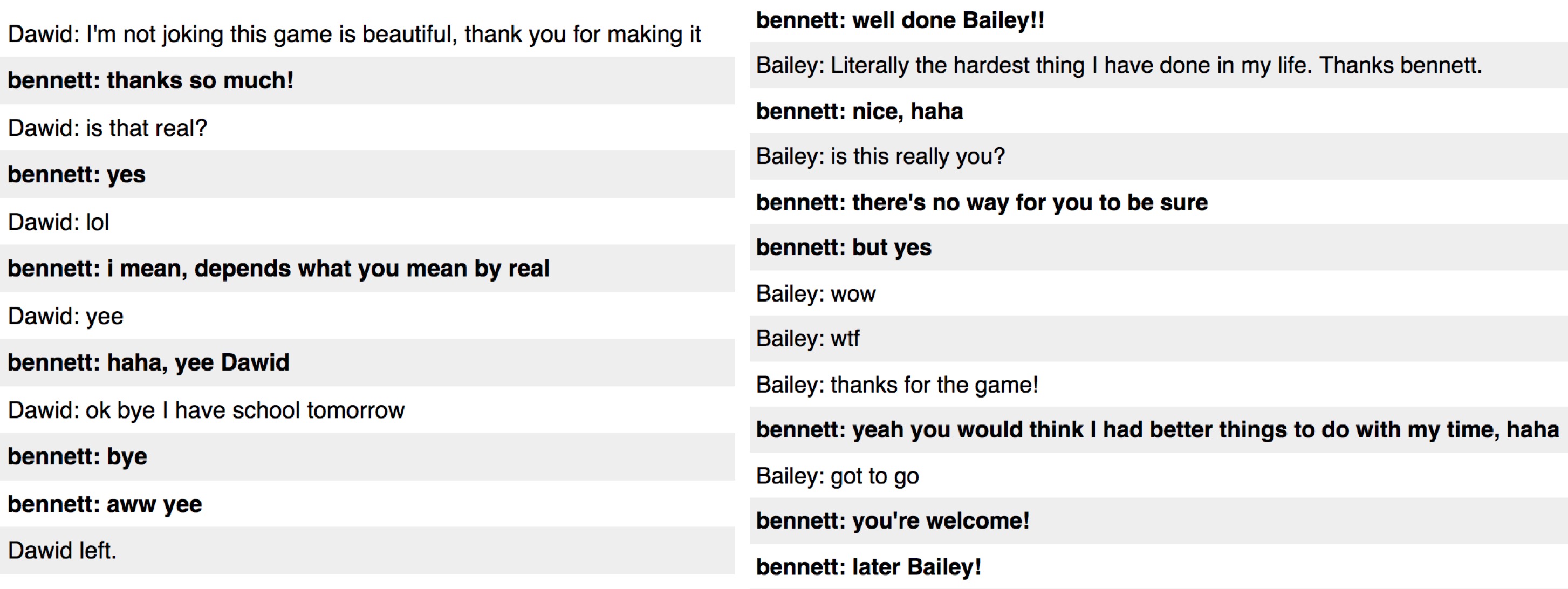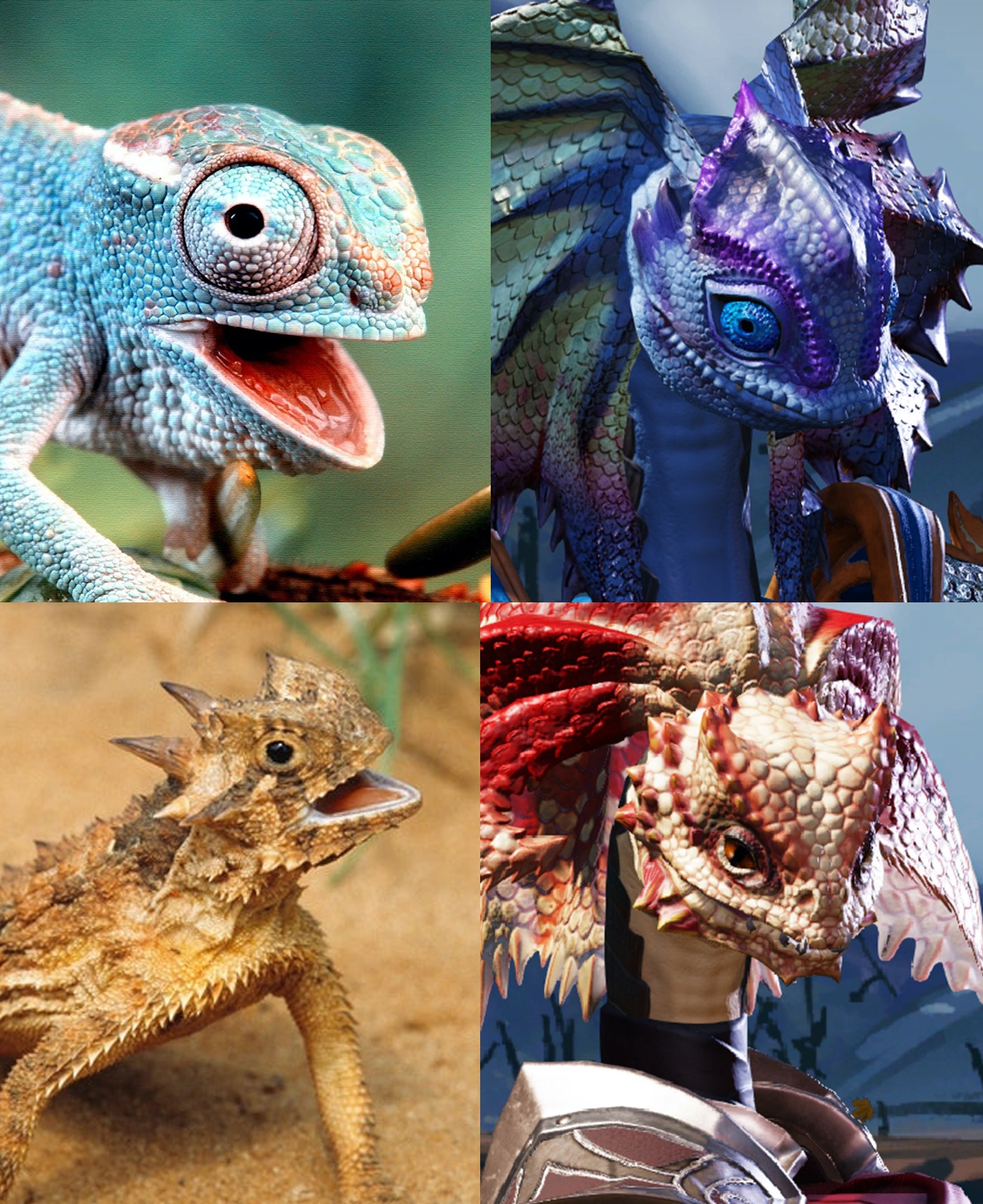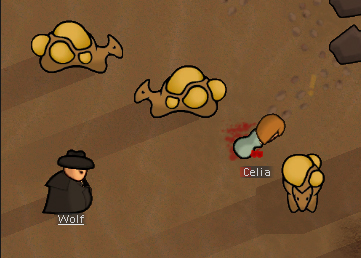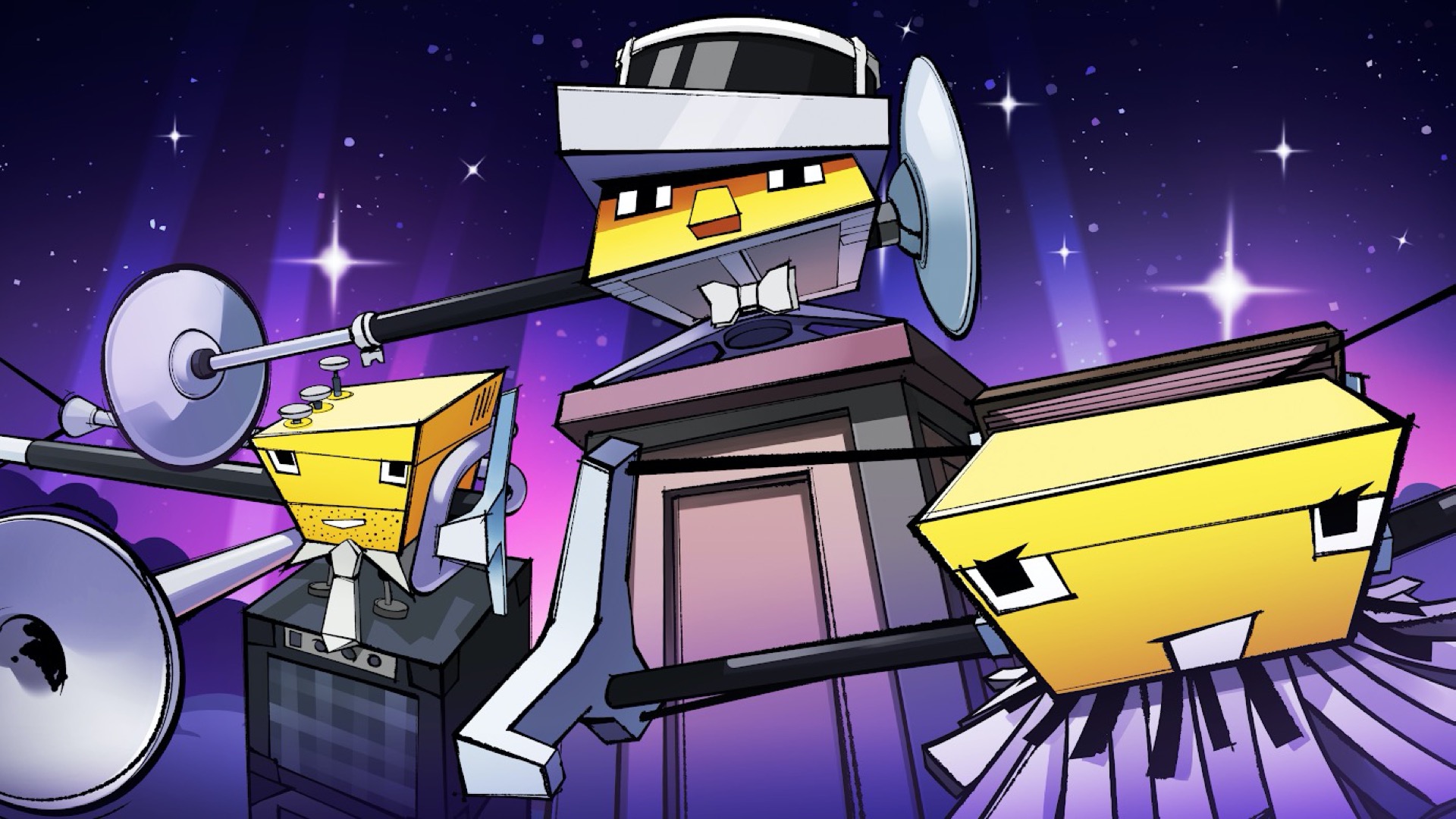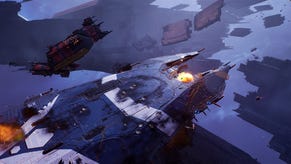Developers of your favourite games share what they're most proud of making
Raindrops on kittens and whiskers on roses
Times are strange and frightening. But one point of great solace for me has been hearing people celebrating things in their lives. It feels especially important right now to hold on to what makes us all proud about what we do and who we are. And what I really love is people showing off things they’re proud of making.
So I’ve been asking a bunch of developers to pick out something they’ve created that brings them pleasure to look back on. And here they are, including Harvey Smith remembering his input on Deus Ex and Dishonored, Derek Yu on one of his first-ever games. There’s pride in doing something for someone else’s game, in the power of details and in little inventions, and ah gosh, shut up, let’s just tuck into a big slice of escapist positivity.
Sanna Berg – Totally Accurate Battle Simulator’s pirate queen
In TABS, there is only war. But that doesn’t mean it can’t be fabulous, as 3D artist Sanna Berg proves.
“My job as an 3D artist at Landfall consists primarily of creating weapons and armours for the soldiers in the quirky wargame that is TABS. The game has been in development longer than I’ve worked here, so a lot of units were already made, and pretty much all of them male-coded. I decided to change that and started implementing more female-coded units, but there is one I am the most proud of. The strongest and most expensive unit in our Pirate Faction is the Pirate Queen. She is kick ass, looks cool, and is even voiced by myself!”
Petri Purho – The Amazing Flying Brothers
One of the makers of Rogue-like physics sandbox Noita, Purho is the creator of many clever experimental games. Here he remembers one he made in under a week, way back in 2007.
“One of the games I’m most proud of making is The Amazing Flying Brothers, mostly because I still enjoy playing it. It is a relatively simple game, played with one button in which you play a trapeze artist, jumping between bars, performing tricks and failing. Seeing your ragdolls face-plant is one of the simple pleasures of life. A few years later Dennis Belfrage and I made a two-player version of the game called Men On The Flying Trapeze.”
Emily Short – Fallen London's weaponised teeth
There are few writers and theorists of interactive fiction as wise as Emily Short, but she’s definitely not above using her skills to conjure moments of delicious, absolute weirdness in Fallen London.
“I’ve recently been writing some late-game content for Fallen London. It’s designed for veteran players, so I can freely riff on the stranger aspects of the setting without having to do a lot of exposition first. And because these stories are told entirely in text, I can set up story moments where there’s a joke, a striking visual, or a disturbing implication that only hits the player after they’ve thought about the sentence for a beat. One of my favourites is this storylet where the player upgrades their teeth to be, essentially, independently-acting weaponry.”
Arvi Teikari – Beyond The Black Hole’s art style
Baba Is You’s creator is known for stunningly intricate and imaginative puzzle game design. But he enjoys remembering the details of something he never released.
“Around 2010 I was working on a simple puzzle game called Beyond the Black Hole. The puzzles weren’t much, but I was very happy about the art style of the game. In particular I was happy with the rain effect in a certain level, combined with parallax effects that felt quite extensive for me at the time. I got the inspiration for the effect from one of Nicklas Nygren’s games, and the end result was a nicely detailed (although maybe a bit hail-like) effect. I still think fondly of that project, even though I never finished it.”
Subset Games – Into the Breach’s visual effects
For programmer Matthew Davis and artist Justin Ma, Into the Breach is the sum of multitudes of details they’ve threaded together. These are two of their favourites.
Matthew Davis “I always loved the game’s aesthetic of mini-dioramas that Justin created, but didn’t often influence it directly since I’m not an artist. The weather effects were a small piece of visual polish that I designed and implemented in code one afternoon and was always very happy with pay-off, especially considering how simple they are.”
Justin Ma “I don’t love to animate, so I generally try to tweak our game’s design to require as few animations as possible – units don’t face directions, they only have idle animations, ecetera. I’m not sure why but I put a ton of time into the mountain-exploding art. It turned out way better than I expected and am always pleased when I see it. ”
Robert Yang – Getting Over It’s ending
An educator and academic as well as a game dev, Robert Yang isn’t proud here of something he directly made. But, as he says, game dev is inherently collaborative, and making things is sometimes about helping others to do so. (Spoiler warning!)
“Bennett Foddy is one of my colleagues at NYU Game Center. One day he mentioned his idea for the ending of Getting Over It (spoiler: a chat room connected live to Bennett himself), but he was rightly suspicious of feature creep, especially with network infrastructure. I suggested a simple NodeJS chat server was actually very doable. Sure enough he prototyped it quickly, and history was made. I had the smallest possible involvement and Bennett did all the work, but it’s a comforting reminder how even ‘solo’ indie devs benefit greatly from creative community. Game development is a conversation.”
Bennett Foddy – VVVVVV’s room names
Just to follow Robert Yang’s avoidance of pride in his own games, Bennett Foddy, maker of QWOP and Getting Over It, remembers his input in someone else’s game. (Them tricksy NYU bluestockings, eh readers?)
“Some people already know this, but I wrote all the room titles for Terry Cavanagh’s VVVVVV. His early alpha had a nice name for the first couple of rooms, then the next one was titled ‘Do I really have to name all of these?’. I said yes, you definitely do have to name them all. But he was still reluctant and the names were not forthcoming in later updates, so I just gave in and offered to name them all. I think it came out pretty nice and I’m pretty proud of naming ‘Veni/Vidi/Vici’.”
Alena Dubrovina – Divinity: Original Sin 2’s lizard ladies
First time I played Divinity: Original Sin 2, I had to be The Red Prince, because look at him. But even he pales before lead character artist Alena Dubrovina’s lizards.
“At one point during the production of Divinity: Original Sin 2 I had to come up with head designs and hairstyles for the Lizard race. Some of them received more of a fantasy dragon-like direction, while others ended up being based on cute real-life lizard pictures from the internet. Keeping up the Larian spirit, I made a chameleon lizard head to fool around, which eventually became one of the top picks for the players. When I think about my work for DOS2 these lizard ladies always cheer me up!”
Tynan Sylvester – Rimworld’s Man in Black
After Rimworld-creator Tynan sent me this, I showed it to my son, who’d just been playing. He told me that only five minutes before, three lynxes killed all his colonists and the Man in Black had appeared. “He missed three shots and was mauled to death,” he said. “Hahaha, I should probably have mentioned how useless he usually is,” Tynan replied.
“The Man in Black shows up after all the player’s colonists have all been critically wounded or killed. This mysterious wanderer is a final Hail Mary pass from the game – can we keep the story going even after all is lost? I’m proud of him because he was such a singular bolt of design insight. I watched a streamer lose her colonists to giant insects and thought – wouldn’t it be great if the game could just continue? Now it does, in this gritty-yet-goofy Western-inspired way. It was easy to implement and added a lot of happiness.”
Derek Yu – Trigger Happy
You’ll know Derek as the originator of the – I think it’s safe to say by now – legendary Spelunky, but for him it’s important to remember the journey he made to even start making it.
“Trigger Happy is a two-player deathmatch game I made when I was 12 years old, using the Klik & Play game-making tool. The older I get, the more important I think it is to appreciate your old work – with all its flaws – as the best you could do at the time. I’m proud that I put the game together myself and worked up the courage to release it on the internet as a finished project. That’s when I really started to consider myself a game creator!”
Anastasia Wyatt – Heaven’s Vault’s seven gods
Despite being a game about words, Heaven’s Vault puts a whole lot of attention to its visual design. Here, Anastasia Wyatt, 2D artist at developer Inkle, reflects on how she realised a facet of its literary lore.
“For Heaven’s Vault, I designed a set of statues to represent the world’s seven Gods. We settled on a simple look which was very focused on silhouette, with swirly, flowing shapes. I think they’re super elegant, and, when coupled with the singular eye, just the right amount of familiar and alien. I feel their forms make them reminiscent of Ancient Greek pottery, and similarly, they’re even more striking when encountered as a cohesive set. When you’re playing Heaven’s Vault and one of these silhouettes appears in the distant, dusty air, I think it certainly has the desired effect.”
Kitty Calis – Minit’s mosquito
I love games which feel huge despite being tiny (yes, I’m playing Animal Crossing), and Minit is a perfect example. I think Kitty really nails something when she notes how its expansiveness exists in its sense of how intimate and personal it all feels.
“Nothing annoys me more than when summer hits and you’re trying to sleep but all you hear is bzzzzzz. In Minit there’s a mini mosquito, it’s basically one pixel with audio, but that’s the power of limitations. It’s such a small detail, but I think personal stories matter, it makes it more relatable. And with that, I think there is really nothing too small… So go out there and tell your stories!”
Gwen Frey – Kine
The indie revolution has long been underway, but I still find indie development stories as powerful as ever. Frey was an artist and animator on BioShock Infinite and The Flame In The Flood, and released her own music puzzler, Kine, last year.
“Nothing makes me prouder than Kine. I had never designed a game before this… I didn’t even know I wanted to be a designer until I started working on it! Kine is a 3D narrative puzzle game about machines that dream of being musicians. You solve puzzles to reveal their story – how they meet and form a band and everything that happens to them along the way. I started crafting this game at night after work. Eventually I got funding, quit my job, and launched it on every platform. The entirety of development was a labor of love.”
Brendon Chung – Skin Deep’s bathroom paraphernalia
There is no one who appreciates the flush of a videogame toilet like Brendon Chung. So it’s natural that his games, from Quadrilateral Cowboy to Thirty Flights of Loving, are full of lovingly mundane stuff to do.
“To cope with the global pandemic, I’m spending time on my current project making my equivalent of comfort food: things in video game bathrooms. Toilets, hand dryers, trashcans. Hand-washing has been on my mind, so the first thing I made was my ideal sink. No-hands operation, instantly warm, easily cleanable, built-in soap dispenser that makes a squeeze-bottle farty-squirty sound. I get a lot of joy in making ideal things, and this one was just what I needed.”
Olivia Wood – Sunless Skies’ Fortunate Navigator
Olivia Wood’s experience as a tabletop RPG player and GM shines in her multilayered characters for Sunless Skies, but her favourite is one in whom positivity flares. Maybe that’s not so surprising.
“I’m proud of the Fortunate Navigator, a Sunless Skies officer. With some sensitivity reading from Ash McAllan, I designed, built and wrote the character and his personal quest line. Sunless Skies is not the most cheerful place – it’s a game of cosmic horror, after all – but the Navigator is a light in the dark. He’s experienced tragedy, happens to carry around the corpse of his best friend (Skies is a Failbetter game), but has an infectious enthusiasm about him. Also, I snuck some traits of a good friend into him, so he’s personally significant, too. And he’s gorgeous (thanks, [artist] John Aggs!).”
Harvey Smith – Deus Ex’s Liberty Island and avoiding lethality in Dishonored
OK, I’ll allow Harvey to relate two things he’s proud of. And he’d like to note that, all his personal feelings here are very much in the context of working in a huge team of other people, who contributed lots more besides.
The last project I really did in-editor level design work for was the original Deus Ex. In that fairly open environment, my role let me influence mostly narrative, game systems, and missions/level design, so in retrospect I am thankful for every day spent on that game, with that team. I made or heavily revised something like half the levels for the game, but of any single mission I probably spent the most time on Liberty Island.
That opening mission was flawed technically, running slowly, but was semi-open world in a delicious way. For me, supporting lots of player direction and exploration, hiding little things (like the sunken flat-barge off the back dock), trying to provide little affirming responses to many different player actions, and using my real-life USAF SATCOM compound for the comm station behind UNATCO… All of those memories evoke a very happy feeling, mostly because of the way players have responded over the years. (Decades!) All of us on the team, from Warren on down, are so thankful for that response. At Arkane, I still work with some of those guys, Ricardo Bare and Steve Powers. Others are never far away, in spirit or at other studios. Friends for life is a pretty rewarding perk.
Liberty Island also held – by design – the core of the Deus Ex atomic level design paradigm. Rather than separate paths for the main play styles, opportunities to exploit those play styles were positioned together, or adjacent to one another. Players could sneak, fight, negotiate, use explosives, lockpick, tech-hack, etcetera, all in the same space, making resource trade off decisions about which was optional, or even just basing the decisions on their own expression.
Similarly, I always have an inward stunned smile (if that’s a thing) when I think about a particular rapid fire moment in the development of Dishonored. One day, during one of our design overview discussions, Raphael Colantonio and I started talking about whether the game could be played without killing anyone. We knew that was mostly possible by using stealth to avoid guards or other common enemies, but we’d never considered it for the main assassination targets. In discussion, we talked about the idea of alternate forms of elimination; still often terrible, but not death. On a lark, we jotted down those character names and tried to put alongside each an alternate resolution. I wish I still had that yellow sticky note, but I’m a minimalist, not a hoarder, and tend to trash things.
Two hours later, we presented the concept for the mechanic, and the list itself, to the team in email. They all then immediately began replacing half of the alt resolutions with very much improved ideas. In the end, it’s a signature element of the series, supported through Dishonored 1, the DLC, Dishonored 2, and Death Of The Outsider.
Both of the games above involve the exploitation or mishandling of pandemics by the elite and powerful, which is a little too close to home given that we are in lockdown still to minimize the spread of Coronavirus, in a sea of misinformation and social media conspiracy theory, against a backdrop where market forces have failed to provide enough (less profitable) rainy day medical supplies, training, hospital beds, or staff. Here’s wishing everyone health, and a quick recovery for the world; I hope we take the lessons we’ve learned about community and health, and apply them going forward.







